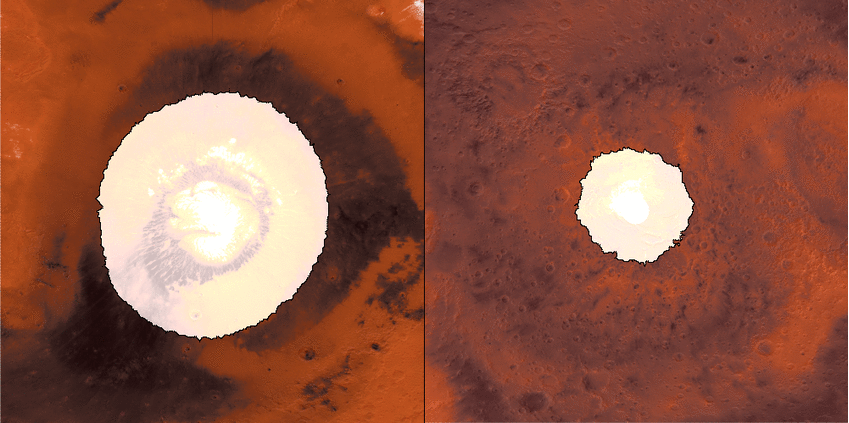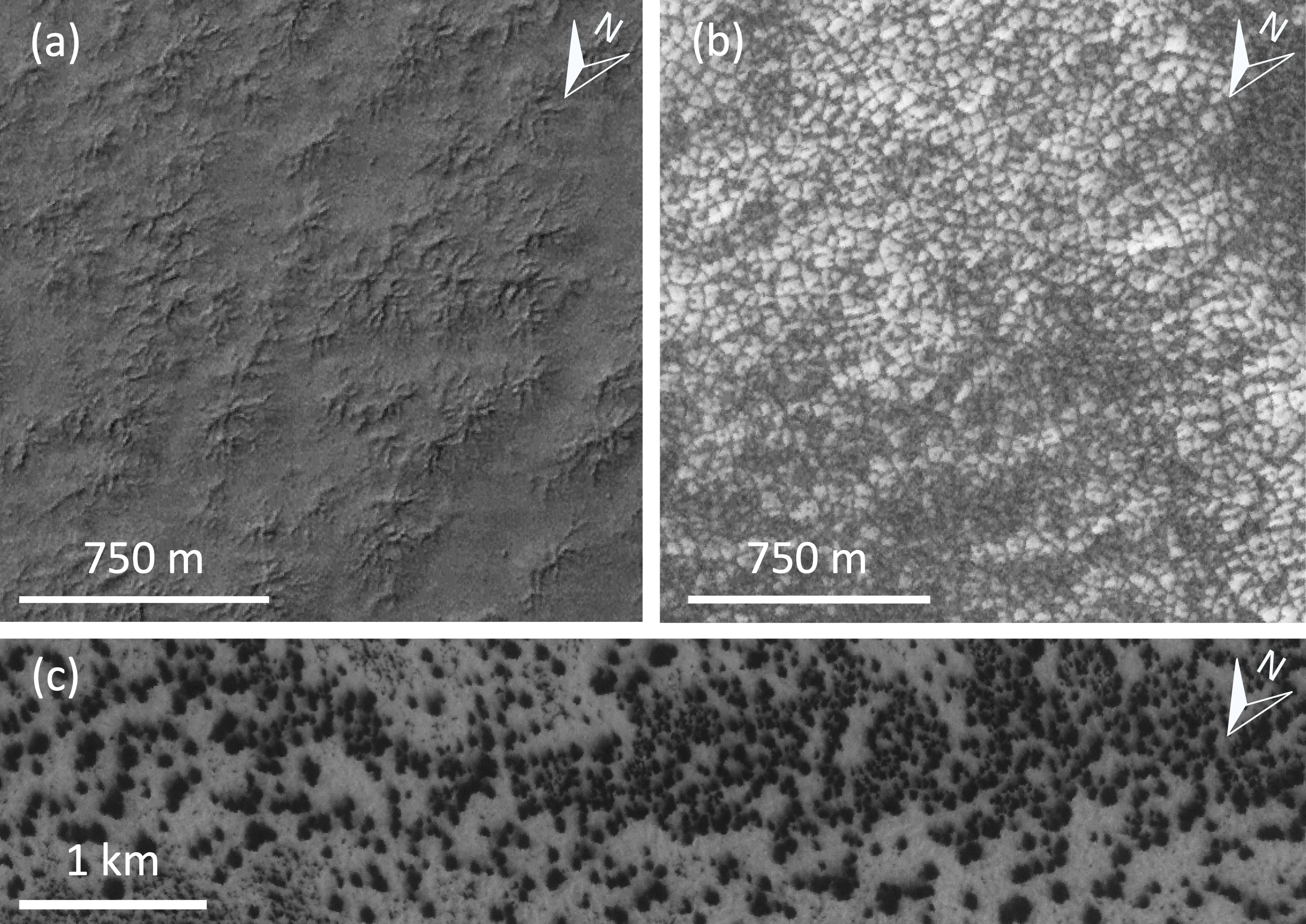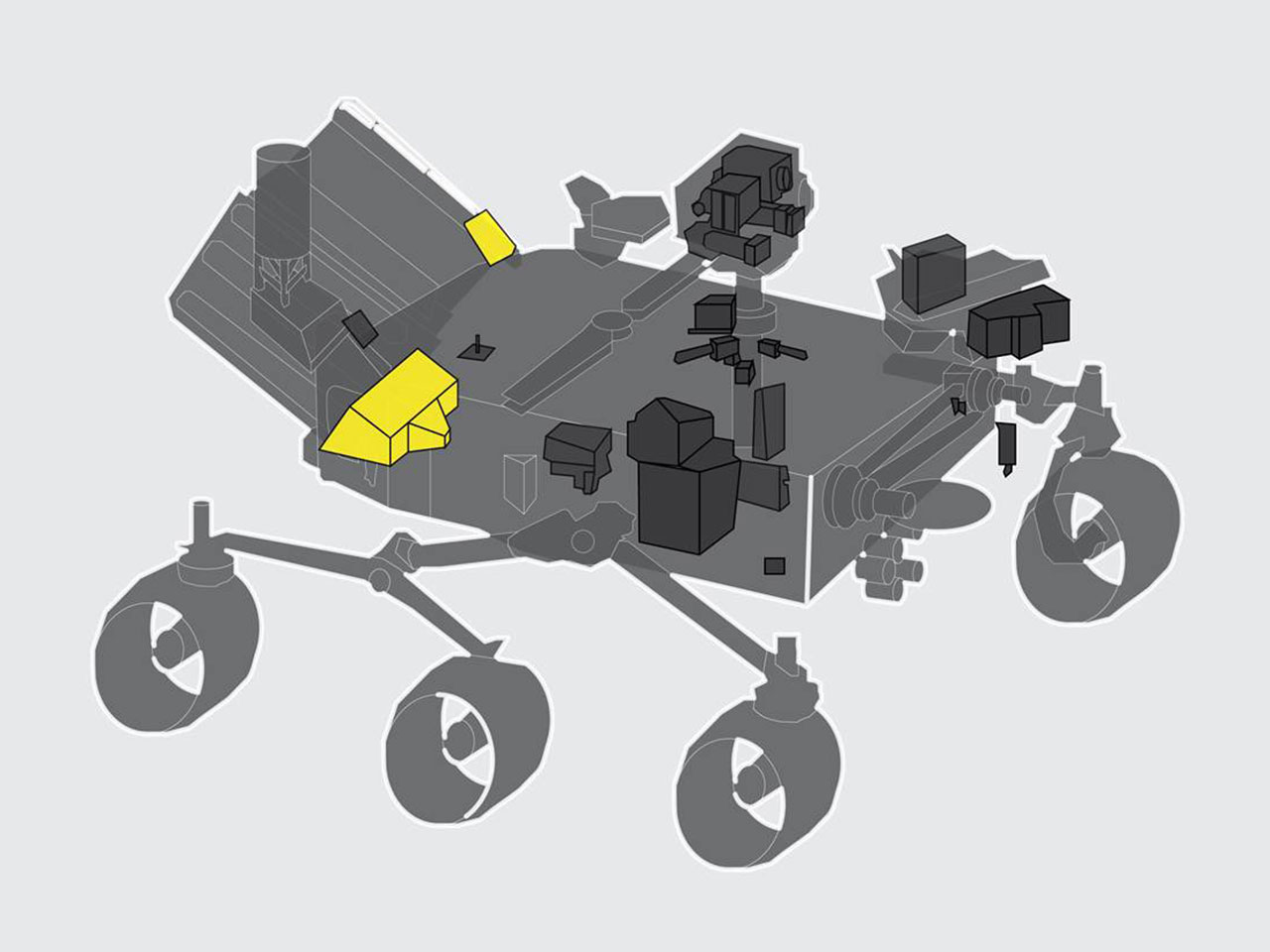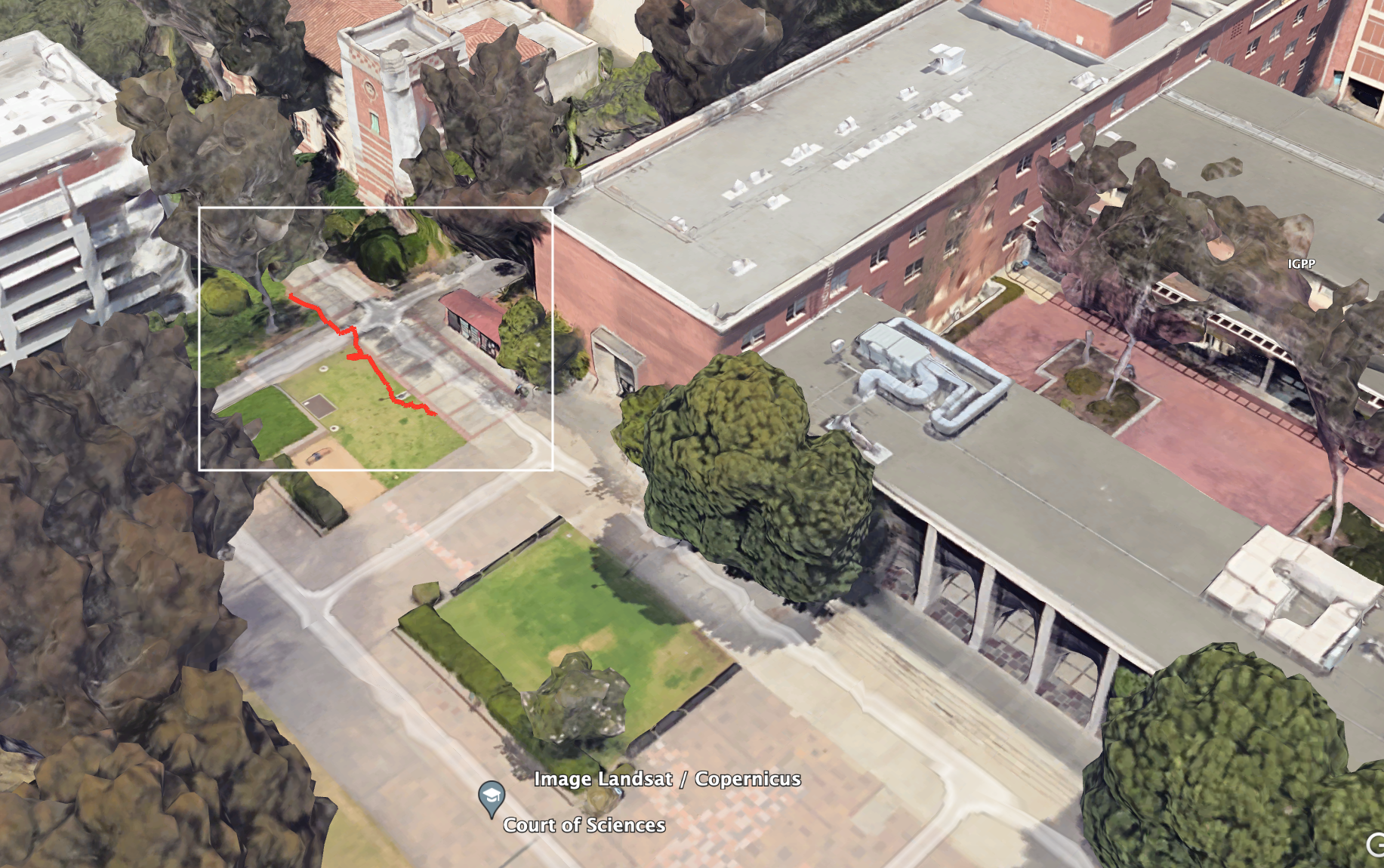
Ice on Mars has been of interest to planetary scientists, geologists, and astrobiologists for decades. It plays a key role in understanding Mars'- and by extension Earth's- geologic and climatic history. Since water and ice support life as we know it on Earth, Martian ice holds great astrobiological value and supports future exploration of our Solar System. It follows that studying the nature of Martian surface and subsurface ice can tell us a lot about the planet's history. Consequently, I am interested in exploring the cryo-geology of the Red Planet, and how it can inform our knowledge of its water-rich past.

Araneiforms, colloquially termed spiders, are Martian ice sublimation features that have no known Earth analogs. They are characterized by a central depression with radially emerging dendritic troughs. Spiders are thought to form to their current extent as a result of the extension and recession of seasonal CO2 ice overlying the South Polar Layered Deposit (SPLD) cryptic region.
Owing to the lack of ground truth observations and field analogs, these features are relatively poorly understood. Despite multiple observational campaigns over the last 6 MY, no spiders have been observed to actively form or grow on the SPLD. I currently work with the Mars Science team at JPL to investigate the differences between spider formation in distinct frost conditions- cryptic and non-cryptic- to help us draw conclusions about the thermophysical context and past conditions of the surface on which these spiders form.



In Venkatraman et al. (2024) I show that our mapping of spiders and lace across cryptic and non-cryptic latitudinal transects reveals significantly larger coverage in the former (~39,000 km2) than the latter (~3600 km2) terrain. This is consistent with the Kieffer notion that insolation, and thus spider density, increases with increased ice translucency. The non-cryptic region shows little to no spider formation, which is consistent with the residual cap’s high albedo and degree of competence. Spiders in the cryptic region closely follows SPLD contours. Outside the SPLD, spiders appear on crater ejecta and impact breccia-rich units suggesting they tend to form on easily eroded material. Our ongoing work investigates the role of water in cryptic ice formation using measurements from TES.

The Radar Imager for Mars' Subsurface Experiment or RIMFAX aboard the Mars 2020 Perseverance Rover is a ground-penetrating radar (GPR) with the goal of probing the ground beneath the rover to capture the subsurface geology of Mars. RIMFAX can detect ice more than 10 m beneath the Martian surface, capturing geologic evidence retained in the subsurface rock, and giving us insight into the planet's wet and warm past.
As a result of being several cm off the ground, RIMFAX can output ambiguous radargrams that are not representative of the true subsurface stratigraphy. I worked on diagnosing this issue by testing our in-house GPR at different heights.

To process the data, I modified the open-source code GPRPy developed by Alain Plattner and colleagues. My version of the software accomodates for reading in MALA data, plotting permittivity values on the radargrams, and overlaying the GPS tracks on Google Earth / Maps.
